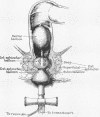Abstract
In order to investigate the electrophysiology of the human internal anal sphincter and two current concepts of sphincter function, simultaneous manometric and electrical recordings were made from circular smooth muscle of the internal anal sphincter in the resting state and during reflexly induced sphincter relaxation. Three groups were studied: seven normal subjects, 25 patients with functional bowel disease, and seven patients with external sphincter paralysis due to spinal cord lesions. In the resting state slow waves of alternating potential (basic electrical rhythm or BER) were recorded in all subjects. Two types of waves were present, a constant sinusoidal pattern or a spindleshaped pattern. Either pattern was consistent for a given individual. Frequency of BER in the internal sphincter was higher than that recorded in any other gastrointestinal muscle. Our findings indicate that the BER recorded from the internal anal sphincter originates in this muscle. This activity may represent a specialized feature of sphincteric muscle since BER cannot be recorded from isolated nonsphincteric circular muscle.
Reproduction of the two patterns of BER by an electronic model suggests that BER, as recorded by this technique, results from a summation of a number of electrically active cells in contact with the recording electrodes. Inhibition of BER occurred when sphincter relaxation was reflexly induced by rectal distension. Both inhibition of BER and degree of sphincter relaxation were proportional to the strength of rectal stimulation, suggesting that strength of stimulus determines the number of active cells which are inhibited.
The associations of high frequency of BER with high resting pressure, and of inhibition of BER with sphincter relaxation suggests that maintenance of sphincter tone is an active process that is governed by BER.
Full text
PDF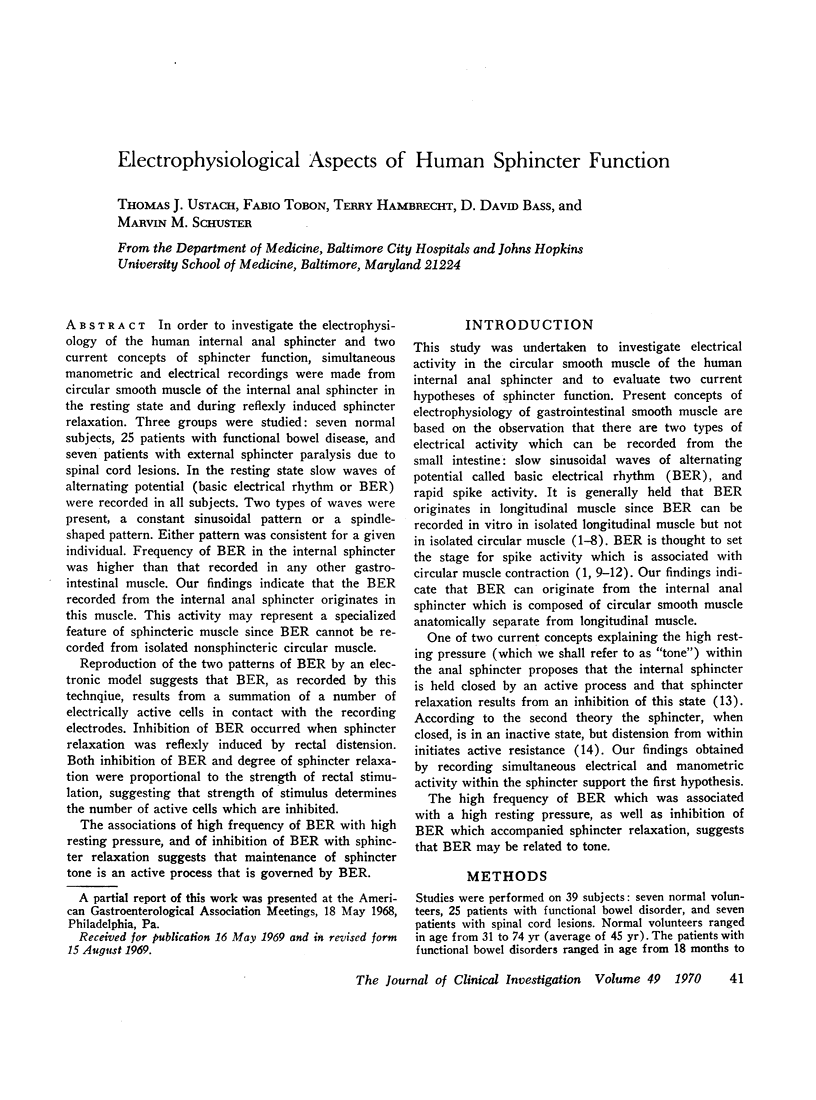
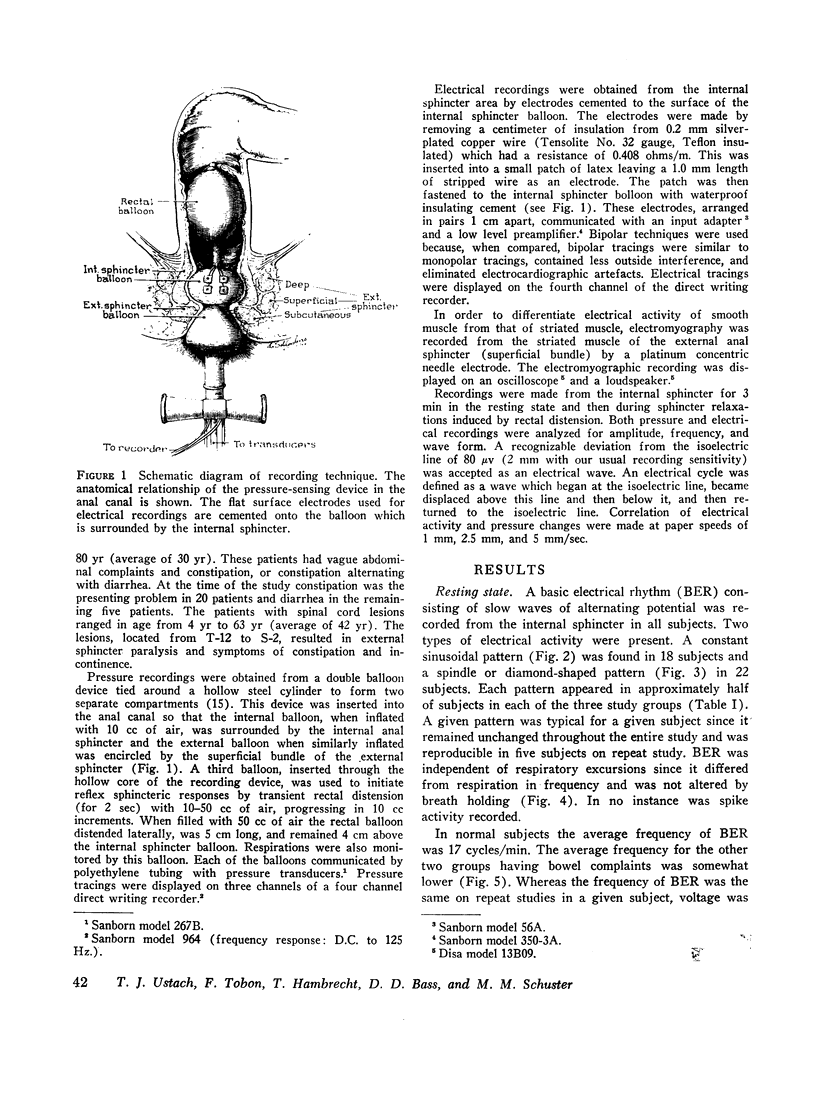

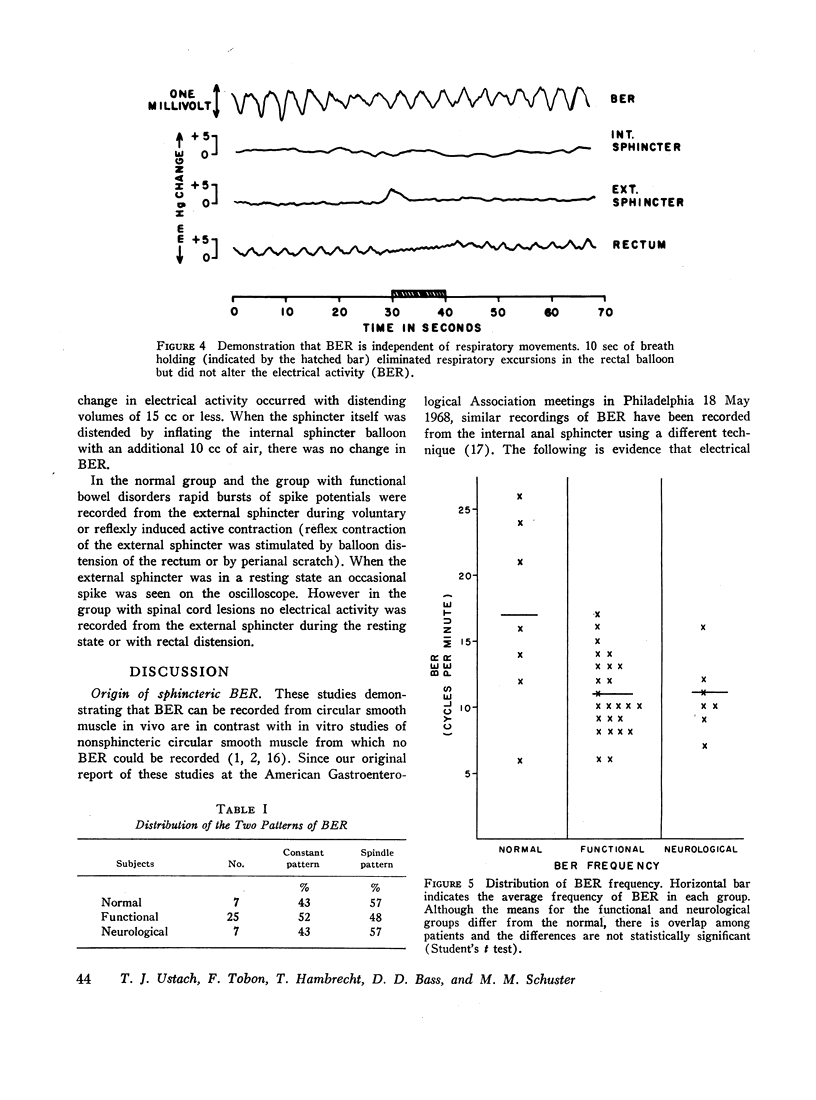
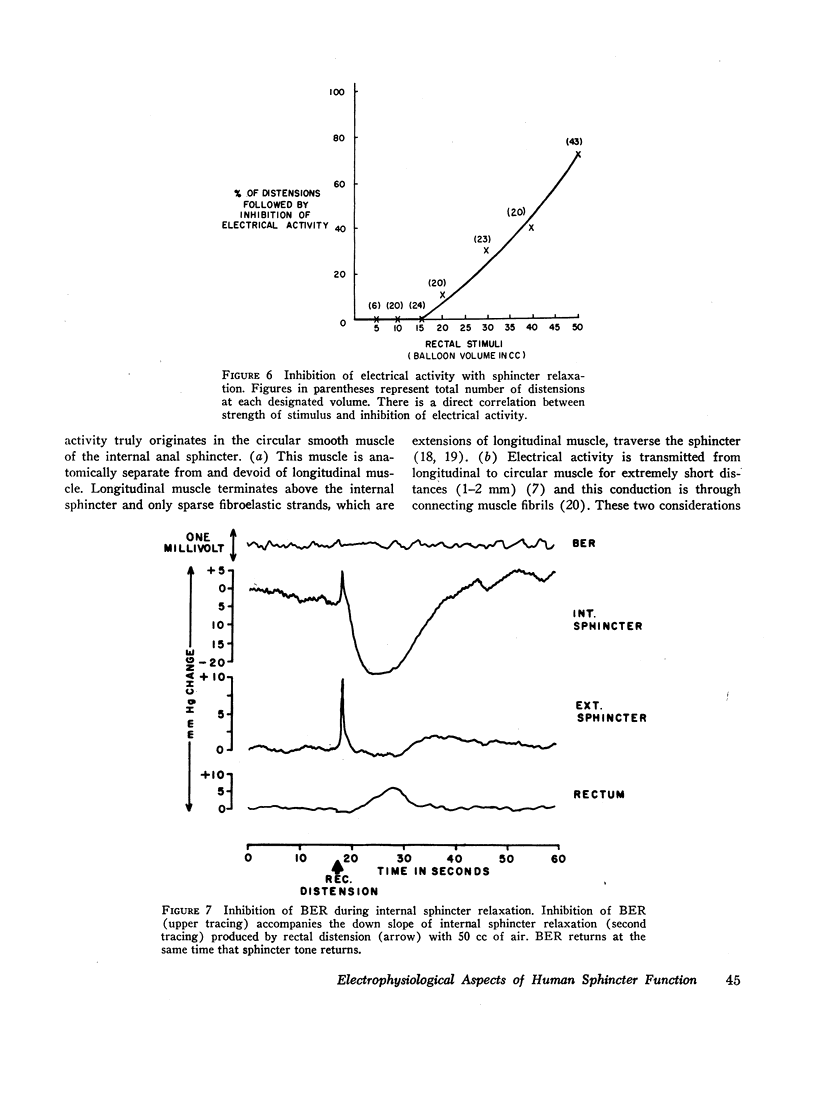
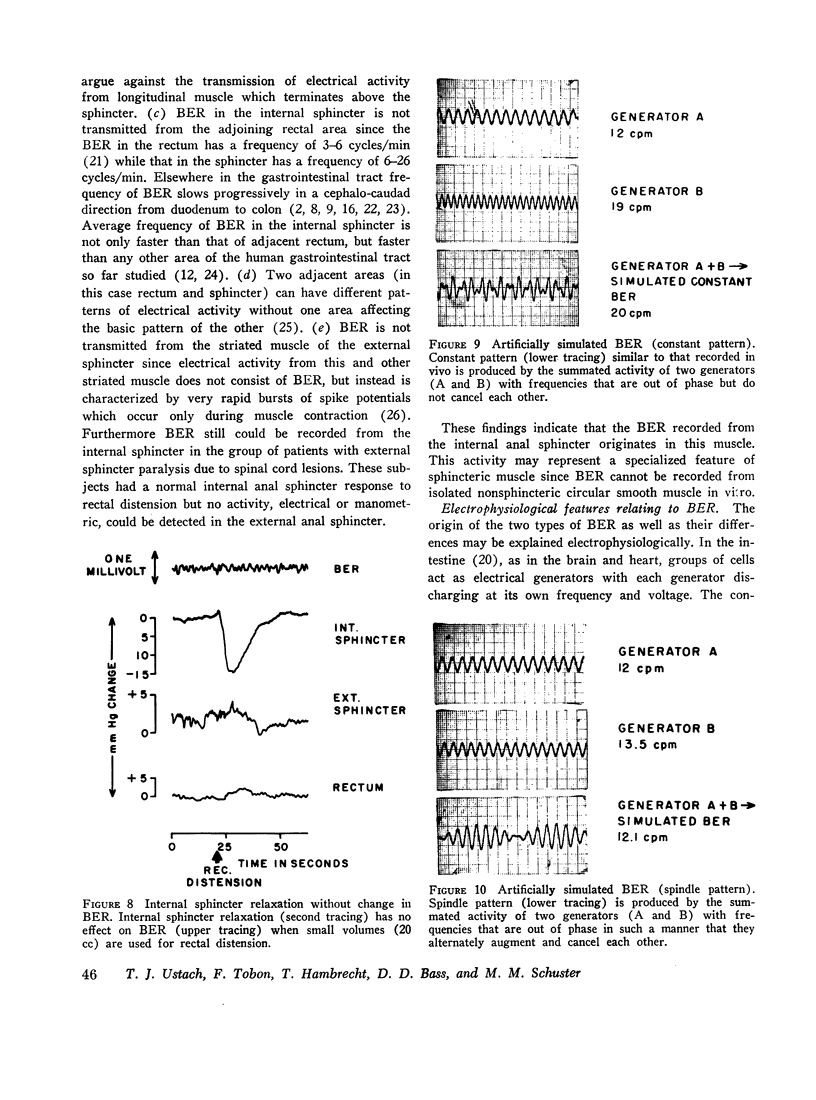
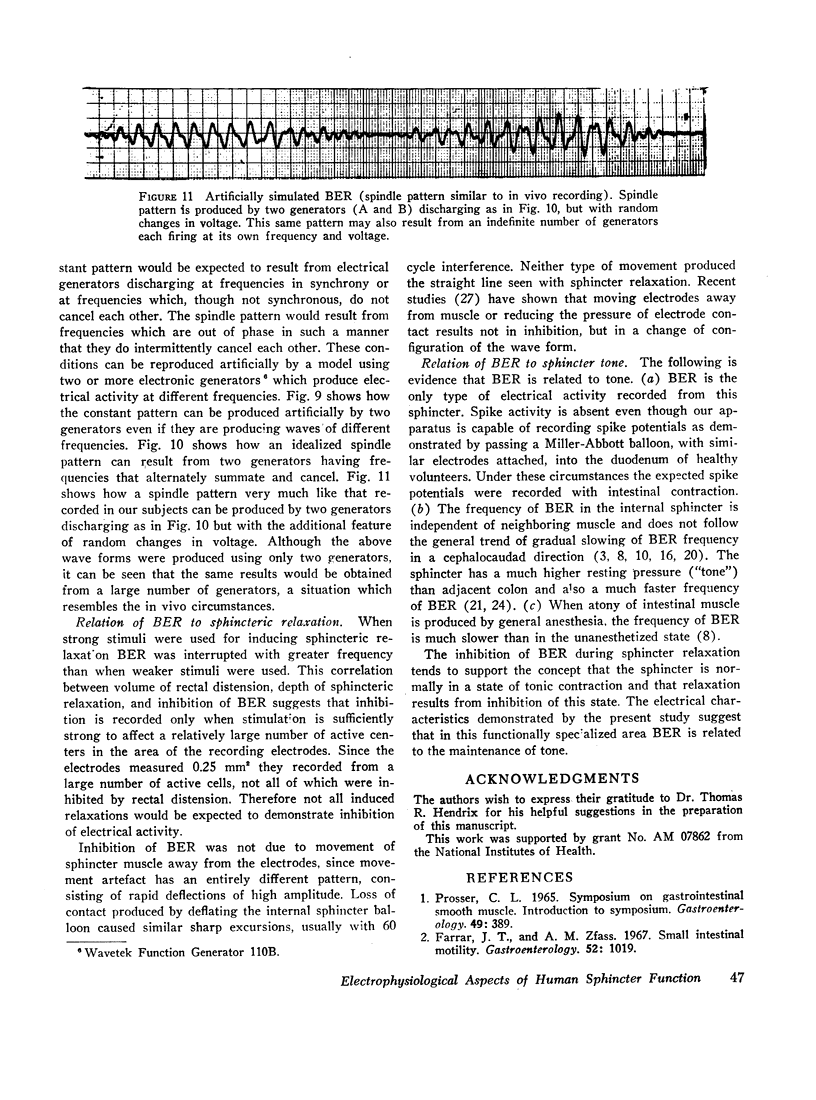
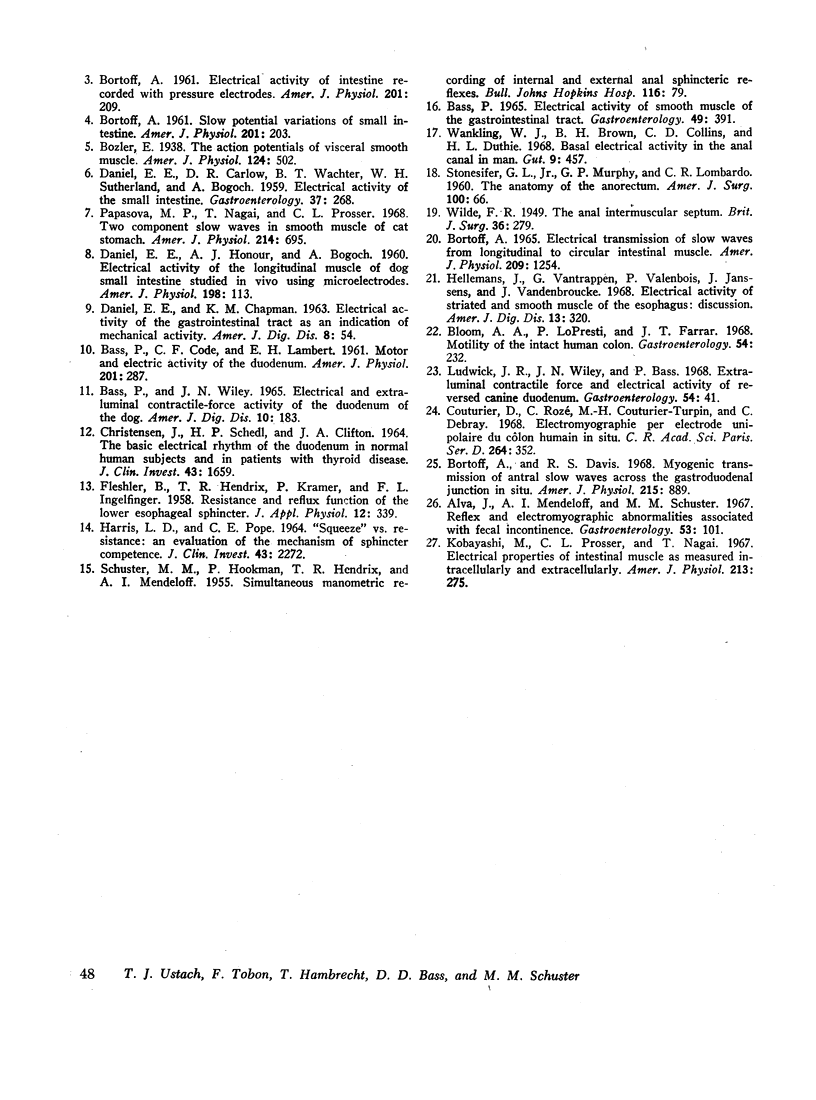
Images in this article
Selected References
These references are in PubMed. This may not be the complete list of references from this article.
- Alva J., Mendeloff A. I., Schuster M. M. Reflex and electromyographic abnormalities associated with fecal incontinence. Gastroenterology. 1967 Jul;53(1):101–106. [PubMed] [Google Scholar]
- BASS P., CODE C. F., LAMBERT E. H. Motor and electric activity of the duodenum. Am J Physiol. 1961 Aug;201:287–291. doi: 10.1152/ajplegacy.1961.201.2.287. [DOI] [PubMed] [Google Scholar]
- BASS P., WILEY J. N. ELECTRICAL AND EXTRALUMINAL CONTRACTILE-FORCE ACTIVITY OF THE DUODENUM OF THE DOG. Am J Dig Dis. 1965 Mar;10:183–200. doi: 10.1007/BF02233747. [DOI] [PubMed] [Google Scholar]
- Bass P. Electric activity of smooth muscle of the gastrointestinal tract. Gastroenterology. 1965 Oct;49(4):391–394. [PubMed] [Google Scholar]
- Bloom A. A., LoPresti P., Farrar J. T. Motility of the intact human colon. Gastroenterology. 1968 Feb;54(2):232–240. [PubMed] [Google Scholar]
- Bortoff A., Davis R. S. Myogenic transmission of antral slow waves across the gastroduodenal junction in situ. Am J Physiol. 1968 Oct;215(4):889–897. doi: 10.1152/ajplegacy.1968.215.4.889. [DOI] [PubMed] [Google Scholar]
- Bortoff A. Electrical transmission of slow waves from longitudinal to circular intestinal muscle. Am J Physiol. 1965 Dec;209(6):1254–1260. doi: 10.1152/ajplegacy.1965.209.6.1254. [DOI] [PubMed] [Google Scholar]
- CHRISTENSEN J., SCHEDL H. P., CLIFTON J. A. THE BASIC ELECTRICAL RHYTHM OF THE DUODENUM IN NORMAL HUMAN SUBJECTS AND IN PATIENTS WITH THYROID DISEASE. J Clin Invest. 1964 Aug;43:1659–1667. doi: 10.1172/JCI105041. [DOI] [PMC free article] [PubMed] [Google Scholar]
- Couturier D., Rozé C., Couturier-Turpin M. H., Debray C. Electromyographie par électrode unipolaire du côlon humain in situ. C R Acad Sci Hebd Seances Acad Sci D. 1967 Jan 9;264(2):352–355. [PubMed] [Google Scholar]
- DANIEL E. E., CARLOW D. R., WACHTER B. T., SUTHERLAND W. H., BOGOCH A. Electrical activity of the small intestine. Gastroenterology. 1959 Sep;37:268–281. [PubMed] [Google Scholar]
- DANIEL E. E., CHAPMAN K. M. Electrical activity of the gastrointestinal tract as an indication of mechanical activity. Am J Dig Dis. 1963 Jan;8:54–102. doi: 10.1007/BF02233560. [DOI] [PubMed] [Google Scholar]
- DANIEL E. E., HONOUR A. J., BOGOCH A. Electrical activity of the longitudinal muscle of dog small intestine studied in vivo using microelectrodes. Am J Physiol. 1960 Jan;198:113–118. doi: 10.1152/ajplegacy.1960.198.1.113. [DOI] [PubMed] [Google Scholar]
- FLESHLER B., HENDRIX T. R., KRAMER P., INGELFINGER F. J. Resistance and reflex function of the lower esophageal sphincter. J Appl Physiol. 1958 Mar;12(2):339–342. doi: 10.1152/jappl.1958.12.2.339. [DOI] [PubMed] [Google Scholar]
- Farrar J. T., Zfass A. M. Small intestinal motility. Gastroenterology. 1967 Jun;52(6):1019–1037. [PubMed] [Google Scholar]
- HARRIS L. D., POPE C. E., 2nd "SQUEEZE" VS. RESISTANCE: AN EVALUATION OF THE MECHANISM OF SPHINCTER COMPETENCE. J Clin Invest. 1964 Dec;43:2272–2278. doi: 10.1172/JCI105101. [DOI] [PMC free article] [PubMed] [Google Scholar]
- Hellemans J., Vantrappen G., Valembois P., Janssens J., Vandenbroucke J. Electrical activity of striated and smooth muscle of the esophagus. Am J Dig Dis. 1968 Apr;13(4):320–334. doi: 10.1007/BF02233007. [DOI] [PubMed] [Google Scholar]
- Kobayashi M., Prosser C. L., Nagai T. Electrical properties of intestinal muscle as measured intracellularly and extracellularly. Am J Physiol. 1967 Jul;213(1):275–286. doi: 10.1152/ajplegacy.1967.213.1.275. [DOI] [PubMed] [Google Scholar]
- Ludwick J. R., Wiley J. N., Bass P. Experimental contractile force and electrical activity of reversed canine duodenum. Gastroenterology. 1968 Jan;54(1):41–51. [PubMed] [Google Scholar]
- Papasova M. P., Nagai T., Prosser C. L. Two-component slow waves in smooth muscle of cat stomach. Am J Physiol. 1968 Apr;214(4):695–702. doi: 10.1152/ajplegacy.1968.214.4.695. [DOI] [PubMed] [Google Scholar]
- SCHUSTER M. M., HOOKMAN P., HENDRIX T. R., MENDELOFF A. I. SIMULTANEOUS MANOMETRIC RECORDING OF INTERNAL AND EXTERNAL ANAL SPHINCTERIC REFLEXES. Bull Johns Hopkins Hosp. 1965 Feb;116:79–88. [PubMed] [Google Scholar]
- Wankling W. J., Brown B. H., Collins C. D., Duthie H. L. Basal electrical activity in the anal canal in man. Gut. 1968 Aug;9(4):457–460. doi: 10.1136/gut.9.4.457. [DOI] [PMC free article] [PubMed] [Google Scholar]



